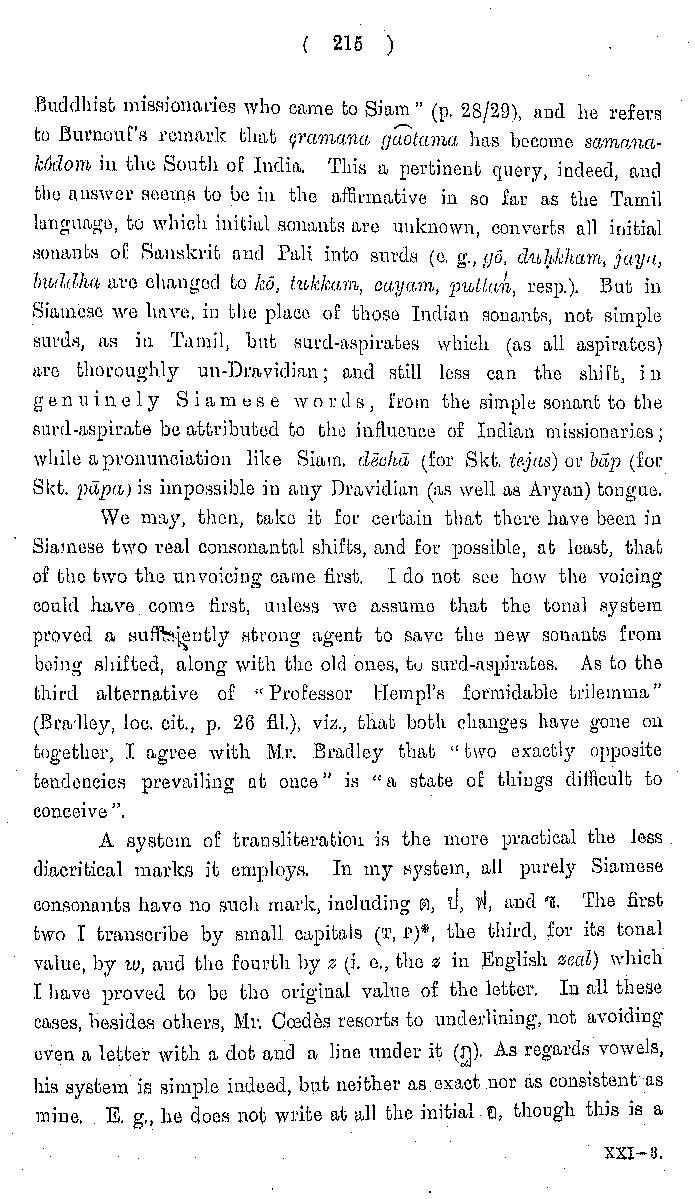( 215 )
Buddhist missionaries who came to Siam" (p. 28/29), and he refers to Burnouf's remark that çramana guotama has become samana- kodom in the South of India. This a pertinent query, indeed, and the auswer seems to be in the affirmative in so far as the Tamil langungo, to which initial souants are uuknown, converts all initial sonants of Sanskrit and Pali into surds (e. g., yõ, dulkham, juyn, bulalha are changed to ko, tukleam, cuyam, pullaun, resp.). But in Siamese we hnve, in the place of those Indian sonants, not simple surds, as in Tamil, but surd-aspirates whichı (as all aspiratos) are thoroughly un-Dravidian; and still less can the shift, in genuinely Siamese words, from the simple sonant to the surd-aspirate be attributed to the influcuce of Indian missionarios; while a pronunciation like Sian, dēchā (for Skt. tejus) or bap (for Skt. pūpa) is inpossible in any Dravidian (as well as Aryan) tongue.
We may, then, tako it for certain that there have been in Sianese two real consonantal shifts, and for possible, at least, that of the two the unvoicing came first. could have come first, unless we assume that the tonal system proved a suftajently strong agent to save the new sonants from baing shifted, along with the old ones, tu surd-aspirates. As to the third alternative of * Professor Hempl's formidable trileinma (Bralley, loc. eit., p. 26 Al.), viz., that both ehanges have gone on togetlier, I agree with Mr. Bradley that "bwo exactly opposite tendencies prevailing at once" is "a state of things dificult to I do not sce how the voicing conceive ".
A system of transliteration is the more practical the less diacritical marks it employs. In my systein, all purely Siamese consonants havo no such mark, including a, d, N, and . The first bwo I transeribe by snall cupitals (T, P)*, the third, for its tonal value, by w, aud the fourth by z (i. c., the e in English seal) which I have proved to be tho original value of the letter. In all these cases, hesides others, Mr: Cedès resorts to umderlining, not avoiding oven a letter with a dot and a line under it ()). As regards vowels, his system is simple indeed, but neither as exact nor as consistent as mine, E. he does not write at all the initial a, though this is a XXI-8.
